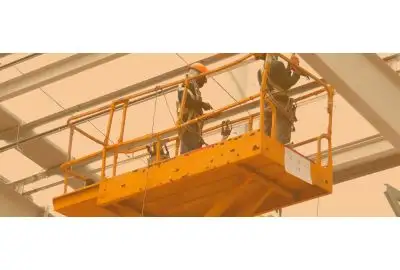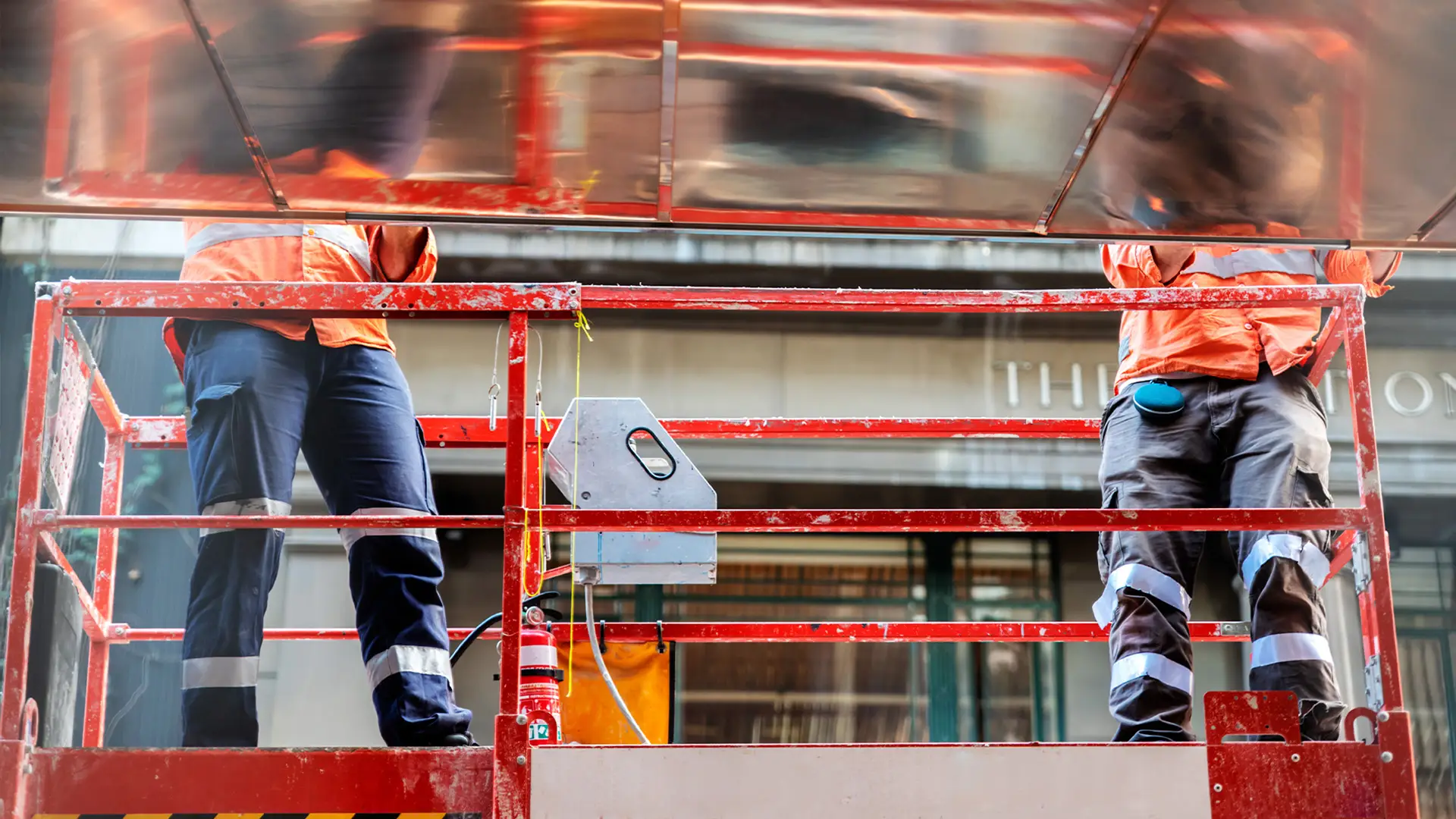Fall Protection and Scissor Lifts

Scissor lifts are a popular choice in the construction and maintenance industries due to their ease of use, versatility, and safety when operated correctly. However, one of the most critical concerns when working at heights is fall protection. While OSHA regulations provide basic guidelines for fall prevention on scissor lifts, many industry professionals argue that these standards may not be sufficient for higher-risk environments.
Scissor lifts can elevate workers up to 60 feet or more, making any fall potentially life-threatening. Despite being considered safe, accidents still occur—often due to human error, equipment failure, or environmental hazards. This highlights the importance of proper training, strict adherence to safety protocols, and the use of additional protective measures beyond what is legally required.
While some believe that with proper training, accidents can be avoided entirely, real-world conditions often complicate this assumption. Weather, unstable ground, unexpected obstacles, and mechanical failures all contribute to the risks involved. Employers must ensure that their teams are well-prepared and equipped to handle such scenarios.
OSHA Fall Protection Requirements for Scissor Lifts
According to OSHA, employees working at heights of four feet or more in general industry and six feet or more in construction require fall protection. When using scissor lifts, this includes guardrails or personal fall arrest systems (PFAS). Employers are also responsible for ensuring that equipment is regularly inspected and maintained to prevent malfunctions.
In addition to physical safeguards, OSHA mandates that all employees receive training on fall protection equipment and the hazards of working at height. Documentation of this training is essential for compliance and accountability.
Types of Fall Protection for Scissor Lifts


Fall protection for scissor lifts typically involves either guardrails or personal fall arrest systems. Both methods are effective, but the choice depends on the specific work environment and tasks being performed.
Guardrails
Most scissor lifts come equipped with guardrails that meet OSHA specifications. These should be installed around the entire platform and should be at least 35–45 inches high. While this provides basic protection, some experts argue that it's not enough for higher elevations where the risk of ejection or injury is greater.
Despite OSHA’s minimum requirements, many companies choose to implement additional safety measures. For instance, workers operating at extreme heights may be required to wear PFAS in addition to guardrails for extra protection.
Personal Fall Arrest Systems (PFAS)
A PFAS includes a full-body harness, lanyard/lifeline, and an anchor point. It works by stopping a fall before the worker hits the ground. Many scissor lifts have built-in anchor points, making it easy for workers to connect their harnesses and maintain safety during operations.
There are cases where guardrails must be removed, such as when workers need open access to one side of the platform. In such situations, OSHA requires the use of PFAS alongside the remaining guardrails to ensure continued safety.
The debate over whether OSHA’s current fall protection standards are adequate has been ongoing. Numerous incidents involving scissor lifts have led to serious injuries or fatalities. One notable case from 2021 involved a worker who was ejected after driving over an unmarked hole, resulting in a fatal fall. Such incidents emphasize the need for stronger safety protocols and better enforcement of existing rules.
Best Practices for Scissor Lift Safety
Regular pre-use inspections are essential for ensuring the integrity of scissor lifts. Before each operation, check for signs of damage, wear, or malfunction. This helps prevent accidents caused by faulty equipment.
Proper training is equally important. Workers should understand how to operate the lift safely, use fall protection equipment, and identify potential hazards. Training should be repeated periodically to reinforce best practices.
Maintenance is another crucial factor. Regular servicing ensures that all components function properly and reduces the risk of mechanical failure. Any damaged parts should be replaced immediately.
Employers should also establish clear safety procedures that go beyond OSHA requirements. This includes having emergency response plans, using warning signs, and ensuring that all workers are aware of the risks associated with working at height.
Industry Standards for Scissor Lifts
In addition to OSHA regulations, several industry standards provide further guidance on scissor lift safety. These include ANSI and ISO standards, which offer more detailed requirements for design, testing, and maintenance.
ANSI A92.20-2018
This standard outlines requirements for mobile elevating work platforms, including scissor lifts. It specifies the need for guardrails and anchor points for fall protection, ensuring that workers remain safe while operating at height.
ISO 12100-1:2010
ISO standards focus on machinery safety and provide guidelines for the design and construction of scissor lifts. They emphasize the importance of reliable fall protection systems and structural support to prevent accidents.
How Can PowerPak Help?
At PowerPak, we specialize in providing fast and reliable access to essential safety equipment. We understand that waiting weeks for a safety harness or fall protection device can lead to unsafe practices on the job site.
Waiting 2-3 weeks for a safety harness or fall protection device will only lead to workers proceeding without the needed equipment.
Read more about how to properly use safety harnesses
We pride ourselves on our fast delivery, with orders often shipped the same day. If you're within our service area, your order will be delivered within 24 hours.
No backorders. If you see a product in our buyer’s guide, it's available on our shelves. We keep a full inventory to avoid delays in your order.
Quick response time. No matter how you reach out—by phone, email, or chat—we respond as quickly as possible. No need to wait 24 hours just to place an order.
With over three decades of experience in the utility and infrastructure industry, we know what it takes to keep workers safe. Our goal is to provide the tools they need, when they need them.
Explore our offerings at PowerPak.net.
Russian Series Wash Pump,Russian Series Washer Pump,Windshield Pump,Windshield Fluid Pump
ruian city yixuan auto parts co.,ltd , https://www.yixuanauto.com